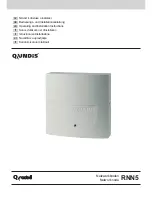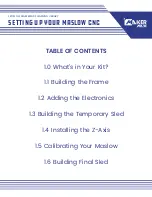
D-Link DGS-3324SRi Intelligent Stackable Gigabit Ethernet Switch
103
the sending and receiving of Link-State Acknowledgment packets. Multiple link-state advertisements can be
acknowledged in a single Link-State Acknowledgment packet.
Depending on the state of the sending interface and the source of the advertisements being acknowledged, a
Link-State Acknowledgment packet is sent either to the multicast address AllSPFRouters, to the multicast
address AllDRouters, or as a unicast packet.
The format of this packet is similar to that of the Data Description packet. The body of both packets is simply a
list of link-state advertisement headers.
The format of the Link-State Acknowledgment packet is shown below:
Version No.
Packet Length
Router ID
Area ID
Authentication Type
Authentication
Authentication
Checksum
Link-State Acknowledgment Packet
5
Link-State Advertisement Header ...
Each acknowledged link-state advertisement is described by its link-state advertisement header. It contains all
the information required to uniquely identify both the advertisement and the advertisement’s current instance.
Link-State Advertisement Formats
There are five distinct types of link-state advertisements. Each link-state advertisement begins with a standard
20-byte link-state advertisement header. Succeeding sections then diagram the separate link-state advertisement
types.
Each link-state advertisement describes a piece of the OSPF routing domain. Every router originates a router
links advertisement. In addition, whenever the router is elected as the Designated Router, it originates a network
links advertisement. Other types of link-state advertisements may also be originated. The flooding algorithm is
reliable, ensuring that all routers have the same collection of link-state advertisements. The collection of
advertisements is called the link-state (or topological) database.
From the link-state database, each router constructs a shortest path tree with itself as root. This yields a routing
table.
There are four types of link state advertisements, each using a common link state header. These are:
Router Links Advertisements
Network Links Advertisements
Summary Link Advertisements
Autonomous System Link Advertisements
The Link State Advertisement Header
All link state advertisements begin with a common 20-byte header. This header contains enough information to
uniquely identify the advertisements (Link State Type, Link State ID, and Advertising Router). Multiple
instances of the link state advertisement may exist in the routing domain at the same time. It is then necessary to
determine which instance is more recent. This is accomplished by examining the link state age, link state
sequence number and link state checksum fields that are also contained in the link state advertisement header.
The format of the Link State Advertisement Header is shown below:
















































